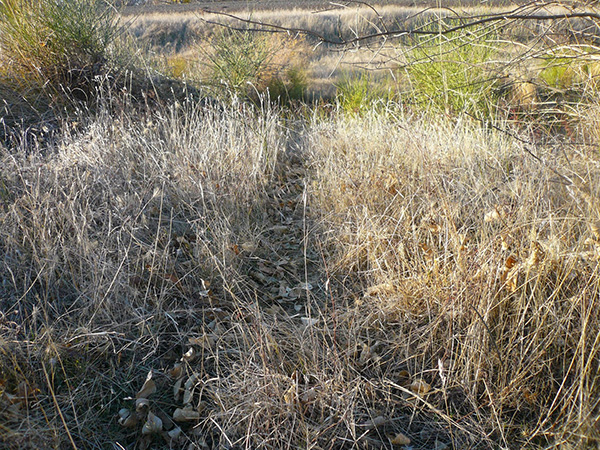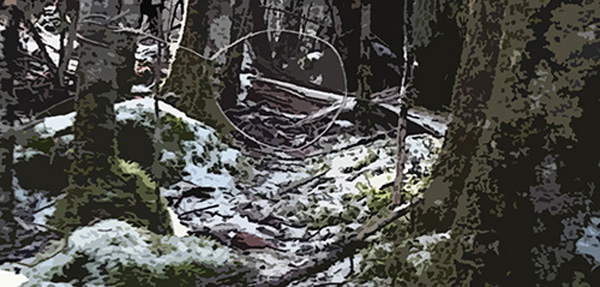It happens to dozens of people every year in the US. They go for a hike, leave the trail, and can never find their way back. Maybe a hunter decides to track his deer past sundown, and everything starts to look the same.
You find yourself lost in the wilderness.
Whatever the reason, you must take action. If you have friends or family that knew where you were headed and when to expect you home, your best bet is to stay put. After just a few hours, most people will have a search party looking for them. However, you should not just sit there. You may find rescue in a few hours, or it could be for several days. In some cases, it takes weeks to be rescued.
In any survival scenario, the four pillars of survival are your main focus. These are food, water, fire, and shelter. The ‘rule of threes’ states that you can survive three hours without warmth from fire or shelter, three days without water, and three weeks without food. However, you can start to feel the negative effects of hunger within 24 hours. Hunger makes other survival tasks very difficult. As your body goes without calories for an extended period of time, it starts to literally eat itself. It begins by burning fat reserves for calories. Then it moves on to muscle and organ tissue. Starvation can make you clumsy, easily confused, and depressed. It can make your whole body hurt and cause an intense headache and stomach ache. Just getting to your feet to go find water or firewood can be difficult.
There are plenty of ways to find food in the wilderness. The easiest option is foraging for wild edibles. However, most wild edibles provide minimal calories and no fats or protein. Going after animals for fats, protein, and calories is your best bet. In most cases, you will not have a weapon with you, so trapping is your best bet. If you had any food for bait, you probably would eat it before using it as bait, so trap placement becomes very important. A trap in the wrong spot is a waste of time and energy. However, a trap in the right spot could get you a meal on the first day. Snares are the easiest and most effective trap to set.
In this article, we will cover how to find game trails and where to set your snare traps in a survival situation.
What are Game Trails?
To understand game trails, you must first understand the mindset of the animals you are targeting. Most land mammals are creatures of habit. They have three primary points of focus on a daily basis. These are food, water, and bedding.
In most cases, they follow the same path from their bedding area to their food and water sources every day. This is a huge advantage for primitive trapping. Without any bait, you need your snares to be placed on a path where an animal is very likely to walk.

For larger animals such as deer and wild hogs, game trails will be worn into the forest floor. You can see on the ground exactly where these animals have walked day after day. Often on my survival challenges, I will follow these game trails because they are typically the path of least resistance. With smaller animals, the paths are not so clearly defined. With animals such as rabbits, raccoons, and possums you may notice that tall grasses are parted from where they have traveled every day. You may notice that dry leaves on the forest floor have been disturbed in a straight line. One of the best spots for a snare is a place where the floor vegetation goes from short to tall. Often you will see a hole in the taller grasses where the animal has pushed its way through. This is an excellent location for a snare.
Active VS Inactive
Just because you see a game trail does not mean that it is an ideal location for a snare. Not all game trails are currently being used. In most cases, game trails will grow back to more of a natural appearance over time once they are no longer in use. However, for the first few months, they may appear to be active even if they are not. You want your snares to be on game trails that are still traveled on a daily basis.
There are certain signs you can look for to determine if a game trail is active. Tracks are an excellent indicator. If you see animal tracks on the game trail, there is a very good chance that the trail has recently been used. Tracks are a short-term indicator. They will fade with the first rain in most cases. The same goes for scat. Animal scat, or droppings, are another sign that will show that your trail is in use. These are both universal signs that apply to any land mammal. It is a good idea to learn how to identify different tracks and scat so you can tell what species has been using the trail. It is not uncommon for more than one species to use the same trail, so be aware of this.
Larger mammals have more species-specific signs for which you can look. Whitetail deer will leave both scrapes and rubs in the fall around their rut period. Scrapes are spots where a deer has scraped away leaves and vegetation from the ground. Rubs are low hanging branches and small trees that have had the bark rubbed off using the antlers of a deer. Both of these are ways that bucks will mark an area prior to mating season. Wild hogs are ground feeders and like to root around in the mud and leaves. You will often see areas where they have used their snouts to dig around on the ground looking for food. These are all good indicators that a game trail is active.
Finding Game Trails
To find a game trail, you have a few options. Oftentimes, I just stumble upon game trails when I am hiking off trail through the woods. As long as you keep your eyes open and know what to look for, this may be an option. You can look for game trails while you collect firewood, go for water, or forage for wild edibles. However, if you want to go scouting specifically for game trails there are a few options.
Think back to the three priorities of any land mammal. These are food, water, and bedding. Food is difficult because most land mammals have a variety of different food sources. It is tough to pinpoint exactly where an animal will be looking for food. However, bedding and water are more specific. For large animals, you can see bedding areas because the grasses will be flattened in large spots, or the leaves on the forest floor will be disturbed in a large area. For smaller animals, you may see a hole in the ground or a hollow tree. Once you find a bedding area, start your search for a game trail to see where they are headed.
Water sources are by far your best bet. Often, there is only one primary water source in a given area. This might be a pond, lake, stream, or river. If this is the case, you can bet animals are headed that way every day. Searching up and down the water line is a great way to find a game trail. Not only will you find trails, but you will often see tracks in the mud on the edge of the water. This will verify that your game trail is active.
I always try to set a good portion of my traps near water sources and bedding areas.
More is Better
The one point I need to emphasize more than any other is that you want to set as many snares as you can. Often you see people on television set one or two traps and expect a meal. This is simply not realistic. You might get lucky if you have some bait, but without bait, you must play the odds. Even if you find a game trail and it happens to be active, the odds of an animal ending up in a single trap are not great. Trapping is a numbers game.

So how many traps do you need? A good number to shoot for is 20 to 30 traps in a trap line. If these traps are all placed on active game trails, and they are set up properly so animals do not get loose, you have a good chance of a meal on any given day. I know this seems like a huge project, but you do not need to set them all up at once.
What I like to do is to find my active game trails when I am out looking for water, collecting firewood, and foraging for wild edibles. Once I know where they are, I will set up a handful of snares each time I go back into these areas for supplies. If you set up five snares in the morning and five snares in the evening, you have 20 traps set after just two days. Setting up five basic snare traps is not very time consuming if you already have an active game trail.
Checking Your Line
Once you have your traps set, you are not quite done. It is vital that you check your traps once or twice a day. If you are lucky enough to snag a meal, you have some variables working against you. The longer that animal stays stuck in the trap, the more time it has to chew its way out. This is one reason I like using copper wire for traps instead of cordage when possible. Even with wire, animals can pull loose. More importantly, an animal in distress is an obvious meal for predators. If you leave an animal in a trap long enough, it will end up as a meal for another animal. This is especially true if you leave it there overnight. I like to check my trap line in the morning and again before dark. Often I will set up a few more snares when I go to check my trap line. This continues to give me better odds every time I go out.
Be Smart About Your Snares
Keep in mind that these animals spend their time surviving every single day. They have incredible eyesight and a great sense of smell. It is important that you disguise your trap so it will not be noticed. Use grasses or leaves to cover it up whenever possible. Cover your scent with ash from your fire, dirt, or pine needles before you set your traps. This will ensure the animal does not sense that something is out of place. You can also use debris to guide animals into your snares. At the point of the trap, place debris on both sides of the game trail. This will ensure that the animal walks exactly where you want it to walk.
To sum it up, trapping with snares is a logical task. Your goal is to find a path where animals walk every day. Then, set up as many snares as possible to ensure that the odds are in your favor. If you take the time to find active game trails and build up your trap line every time you venture out, your chances are solid that you will be eating meat for dinner instead of just leafy greens.

